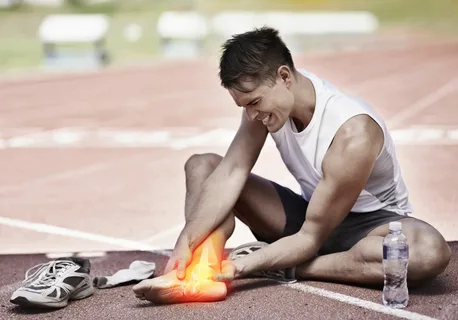Continuing medical care can be expensive and can put people’s jobs in jeopardy. In some cases, injuries are so severe that a person can no longer perform the duties of their former job. Many people rely on gainful employment to pay their bills and maintain a comfortable lifestyle.
If the injury was caused by someone else, you may have a legal claim and you should pursue it. Speaking with a personal injury attorney will help you understand your rights and if you have a personal injury claim.
Table of Contents
Anterior Cruciate Ligament injury
An anterior cruciate ligament (ACL) tear is a very common injury to the knee. It often occurs in conjunction with injuries to the menisci, articular cartilage, or collateral ligaments. Injuries to the ACL are especially common among athletes and people who participate in sports that require sudden changes in direction. People who work in fields such as climbing are also at risk.
An anterior cruciate ligament injury can occur in both contact and noncontact mechanisms. In fact, over 70% of all ACL injuries occur during noncontact mechanisms. These mechanisms include landing after a jump, sudden deceleration, or changing direction. Women are most likely to sustain an ACL injury while participating in sports that involve a lot of jumping or pivoting. The risk of an ACL injury is two to eight times higher in women than in men. This is probably due to increased female participation in sports.
A ruptured ACL may require surgical intervention to repair. The resulting swollen knee may require a long recovery period. The cruciate ligament is a crucial part of the knee joint. In addition to holding bones together, these ligaments help stabilize the knee joint.
Herniated or ruptured disk injury
A herniated or ruptured disk injury can be extremely painful and could have long-term consequences. A healthcare provider may recommend rest, exercise, and a home program to help you cope with the pain. Your healthcare provider may also prescribe nonsteroidal anti-inflammatory drugs (NSAIDs) or analgesics, which are nonsteroidal medications that reduce inflammation and relieve pain. NSAIDs can lead to side effects such as stomach ulcers and kidney and liver problems.
The pain associated with a herniated disc can interfere with daily activities, including bowel movements. A herniated disc may cause pressure on nerves, which can result in permanent damage. Herniated discs can also lead to incontinence, bowel movement irregularity, and even partial paralysis. In severe cases, a patient may have to undergo emergency surgery to relieve the pressure on the nerves.
A herniated disc occurs when the gel-like center ruptures through a weak part of the disc. The disc will cause back or leg pain, and the affected area may also experience numbness or tingling. Often, the herniated disc will shrink over time, reducing the pain to a certain extent.
Recurrent hamstring strain
Recurrent hamstring strain injuries are common in athletes and in recreational sports, and they can be debilitating for competitive athletes. In many cases, they require two to six weeks of rest to recover completely. Even with a good recovery, these injuries are likely to recur. Research indicates that up to 60 percent of athletes who suffer a hamstring injury will sustain a reinjury in the following season. Moreover, current treatment options may not always be effective.
A hamstring injury typically presents with a sudden, sharp pain in the back of the thigh. The pain may also be accompanied by a popping or tearing sensation. The affected leg may also be tender and may not be able to bear weight. While most hamstring injuries can be treated at home, more severe cases require medical care.
Physical therapy and medication can help alleviate pain and inflammation. Using ice to cool the affected area can help the muscles recover and prevent further damage. Patients with a hamstring injury should avoid strenuous activity for a few weeks. The length of time off will depend on the severity of the injury.
Stress fracture
Stress fracture injuries are caused by repeated mechanical stresses to the bone. These stresses are usually tensile or compressive. These injuries often occur in high-impact sports like track and field. It is important to understand the risk factors for stress fractures and their management. Symptoms may include increasing pain and tenderness with activity.
People at risk for stress fractures are those who play a single sport year-round with minimal rest. They may also be older and have bone density problems. In these cases, the stress reaction will occur sooner than it would in a healthy bone. People with low bone density or high BMI are at an increased risk of stress fractures.
Symptoms of stress fractures can be subtle at first, but they tend to get worse over time. A person with a stress fracture should always warm up before exercise and take frequent breaks. Also, wear proper footwear, such as running shoes, and do not wear old ones. In addition, they should cross-train with activities that are low-impact to prevent stress fractures.
